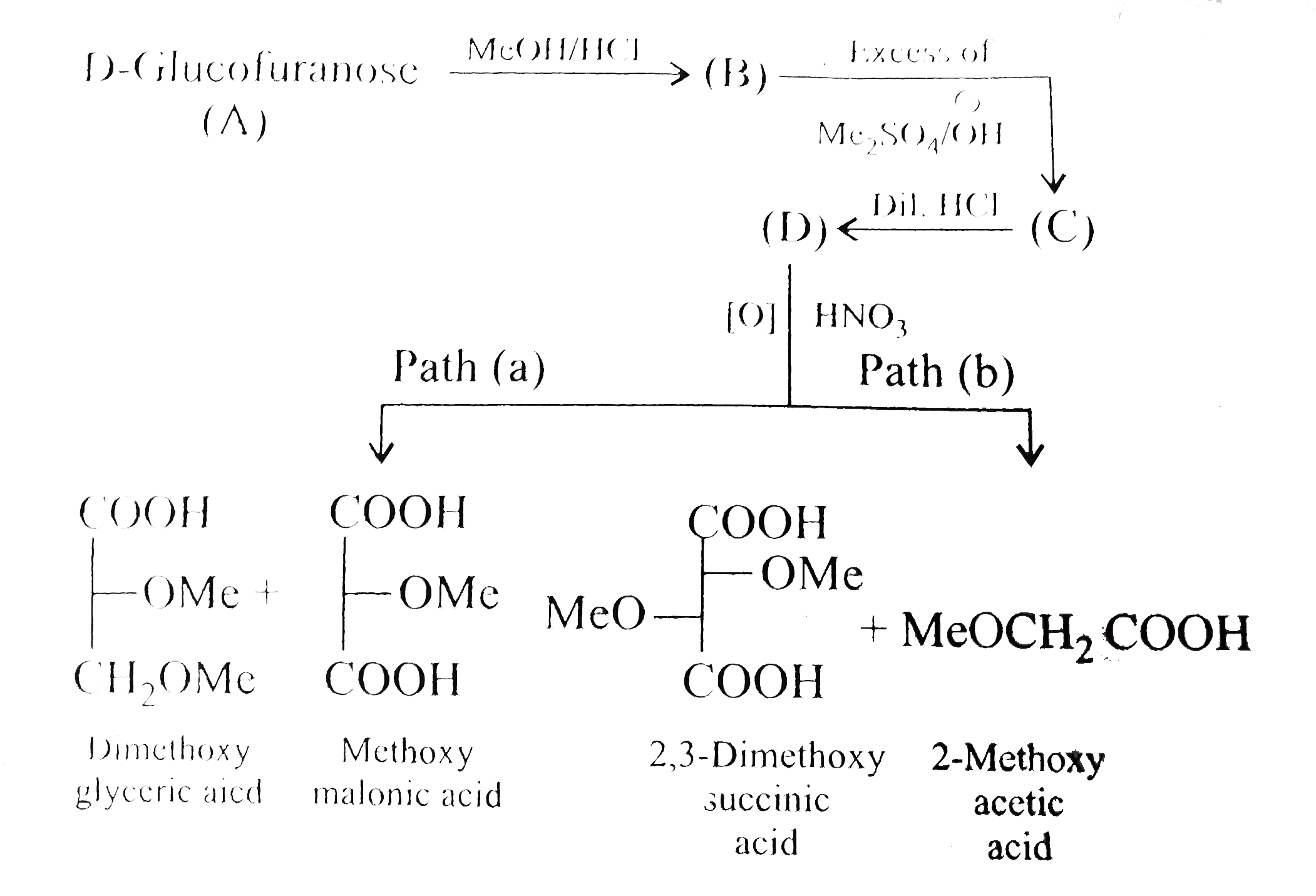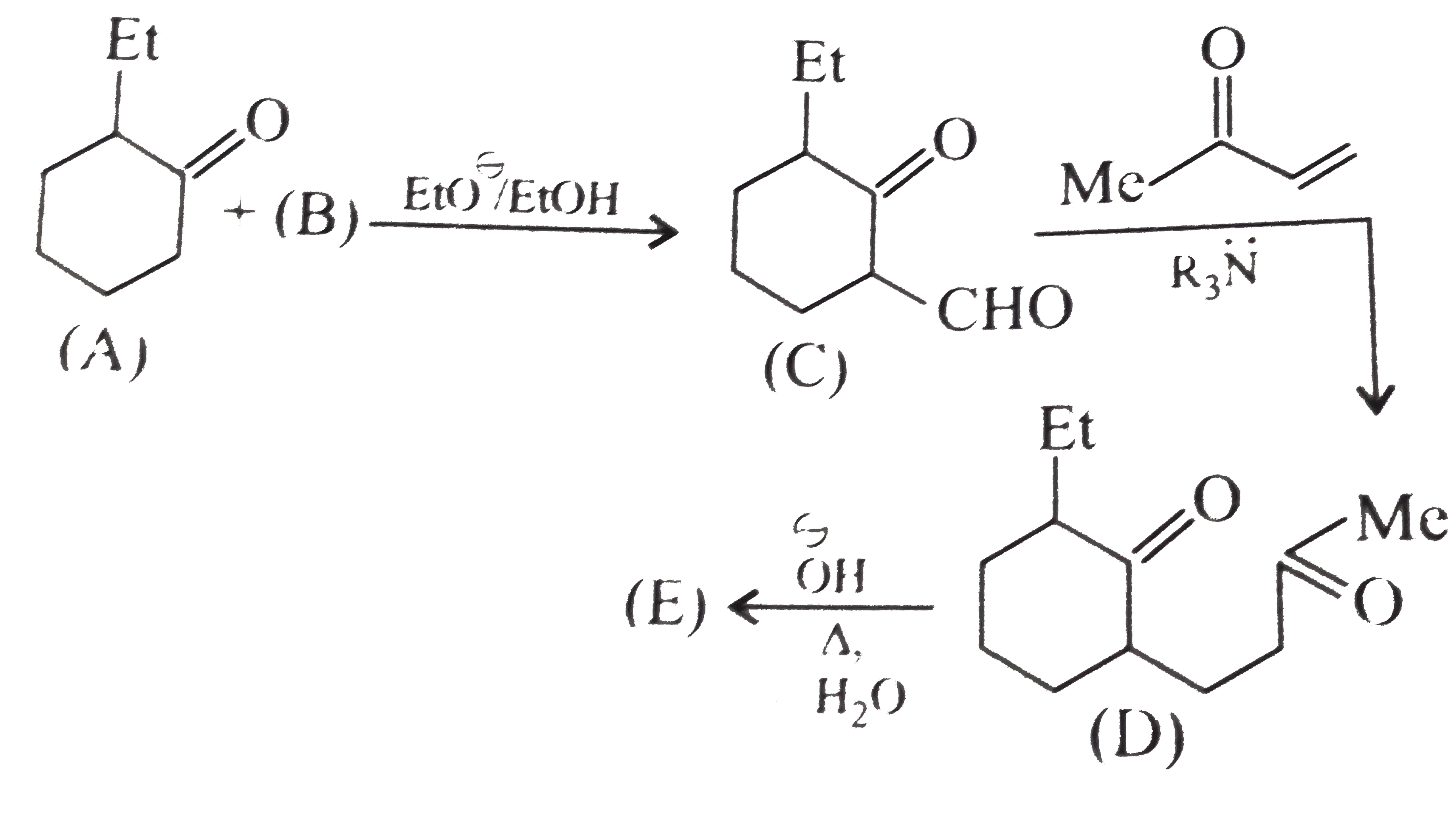Which statements(s)is/are correct about sucrose?
(C1−α)(OH) of glucopyranose is linked with (C2(−β)(OH) of fructofuranose.
(C1−α)(OH) of glucopyranose is linked with (C2−β)(OH) of fructopyranose.
It reduces Fehling's solution.
It exhibits mutarotation.
The correct Answer is:A
To determine which statements about sucrose are correct, we need to analyze the structure and properties of sucrose. Here’s a step-by-step breakdown:
Step 1: Understand the Structure of Sucrose
- Sucrose is a disaccharide composed of two monosaccharides: glucose and fructose.
- The structure of sucrose can be represented as follows:
- Glucose (in its pyranose form) is linked to fructose (in its furanose form) through a glycosidic bond.
Hint: Draw the structure of sucrose to visualize the linkage between glucose and fructose.
Step 2: Identify the Glycosidic Linkage
- The glycosidic bond in sucrose is formed between the anomeric carbon (C1) of glucose and the C2 of fructose.
- This linkage is an α(1→2) glycosidic bond.
Hint: Remember that the anomeric carbon is the carbon that was part of the carbonyl group in the open-chain form of the sugar.
Step 3: Determine if Sucrose is a Reducing Sugar
- A reducing sugar has a free aldehyde or ketone group that can reduce other compounds.
- In sucrose, the glycosidic bond prevents the anomeric carbon of glucose from being free, making sucrose a non-reducing sugar.
Hint: Check if the anomeric carbon has a hydroxyl group; if not, it cannot act as a reducing sugar.
Step 4: Analyze Mutarotation
- Mutarotation is the change in optical rotation due to the change in the equilibrium between the α and β anomers of a sugar.
- Since sucrose does not have a free anomeric carbon (due to the glycosidic bond), it cannot undergo mutarotation.
Hint: Recall that mutarotation requires the ability to interconvert between anomers, which is not possible in sucrose.
Step 5: Evaluate the Statements
1. Statement 1: Correct - The linkage between C1 of glucose and C2 of fructose is indeed correct.
2. Statement 2: Incorrect - Glucose is linked to fructose, but fructose is in the furanose form, not the pyranose form.
3. Statement 3: Correct - Sucrose does not reduce Fehling's solution due to being a non-reducing sugar.
4. Statement 4: Correct - Sucrose cannot undergo mutarotation because it lacks a free anomeric carbon.
Final Conclusion
- The correct statements about sucrose are:
- Statement 1 is correct.
- Statement 3 is correct.
- Statement 4 is correct.
- Statement 2 is incorrect.
Final Answer: Statements 1, 3, and 4 are correct about sucrose.
- Sucrose is a disaccharide composed of two monosaccharides: glucose and fructose.
- The structure of sucrose can be represented as follows:
- Glucose (in its pyranose form) is linked to fructose (in its furanose form) through a glycosidic bond.
- The glycosidic bond in sucrose is formed between the anomeric carbon (C1) of glucose and the C2 of fructose.
- This linkage is an α(1→2) glycosidic bond.
- A reducing sugar has a free aldehyde or ketone group that can reduce other compounds.
- In sucrose, the glycosidic bond prevents the anomeric carbon of glucose from being free, making sucrose a non-reducing sugar.
- Mutarotation is the change in optical rotation due to the change in the equilibrium between the α and β anomers of a sugar.
- Since sucrose does not have a free anomeric carbon (due to the glycosidic bond), it cannot undergo mutarotation.
1. Statement 1: Correct - The linkage between C1 of glucose and C2 of fructose is indeed correct.
2. Statement 2: Incorrect - Glucose is linked to fructose, but fructose is in the furanose form, not the pyranose form.
3. Statement 3: Correct - Sucrose does not reduce Fehling's solution due to being a non-reducing sugar.
4. Statement 4: Correct - Sucrose cannot undergo mutarotation because it lacks a free anomeric carbon.
- The correct statements about sucrose are:
- Statement 1 is correct.
- Statement 3 is correct.
- Statement 4 is correct.
- Statement 2 is incorrect.
Topper's Solved these Questions
- BIOMOLECULESBOOK - CENGAGE CHEMISTRY ENGLISHCHAPTER - BIOMOLECULESEXERCISE - Exercises (Single Correcttype)
80 Videos
- BIOMOLECULESBOOK - CENGAGE CHEMISTRY ENGLISHCHAPTER - BIOMOLECULESEXERCISE - Exercises (Assertion-Reasoning)
15 Videos
- BIOMOLECULESBOOK - CENGAGE CHEMISTRY ENGLISHCHAPTER - BIOMOLECULESEXERCISE - Exercises (Linked Comprehension)
36 Videos
- AROMATIC COMPOUNDS AND ALKYL AND ARYL HALIDES BOOK - CENGAGE CHEMISTRY ENGLISHCHAPTER - AROMATIC COMPOUNDS AND ALKYL AND ARYL HALIDES EXERCISE - Archives Subjective Type
4 Videos
- CARBOXYLIC ACIDS AND THEIR DERIVATIVESBOOK - CENGAGE CHEMISTRY ENGLISHCHAPTER - CARBOXYLIC ACIDS AND THEIR DERIVATIVESEXERCISE - Exercises Archives (Analytical And Descriptive)
34 Videos
Similar Questions
Which statement (s) is /are correct ?
View SolutionWhich statement(s) is/are correct
View SolutionWhich statement(s) is/are correct?
View Solution
Which statement(s) is/are correct?
View SolutionWhich statement (s) is/are correct about corrosion?
View Solution
Which statement(S) is/are correct about (A)?
View SolutionWhich statement/s is/are correct?
View Solution
Which statement (s)is/are correct about the formation of (D) ?
View SolutionWhich statement(s) is /are correct about Brown ring test ?
View SolutionWhich statements are correct about sucrose?
View Solution
